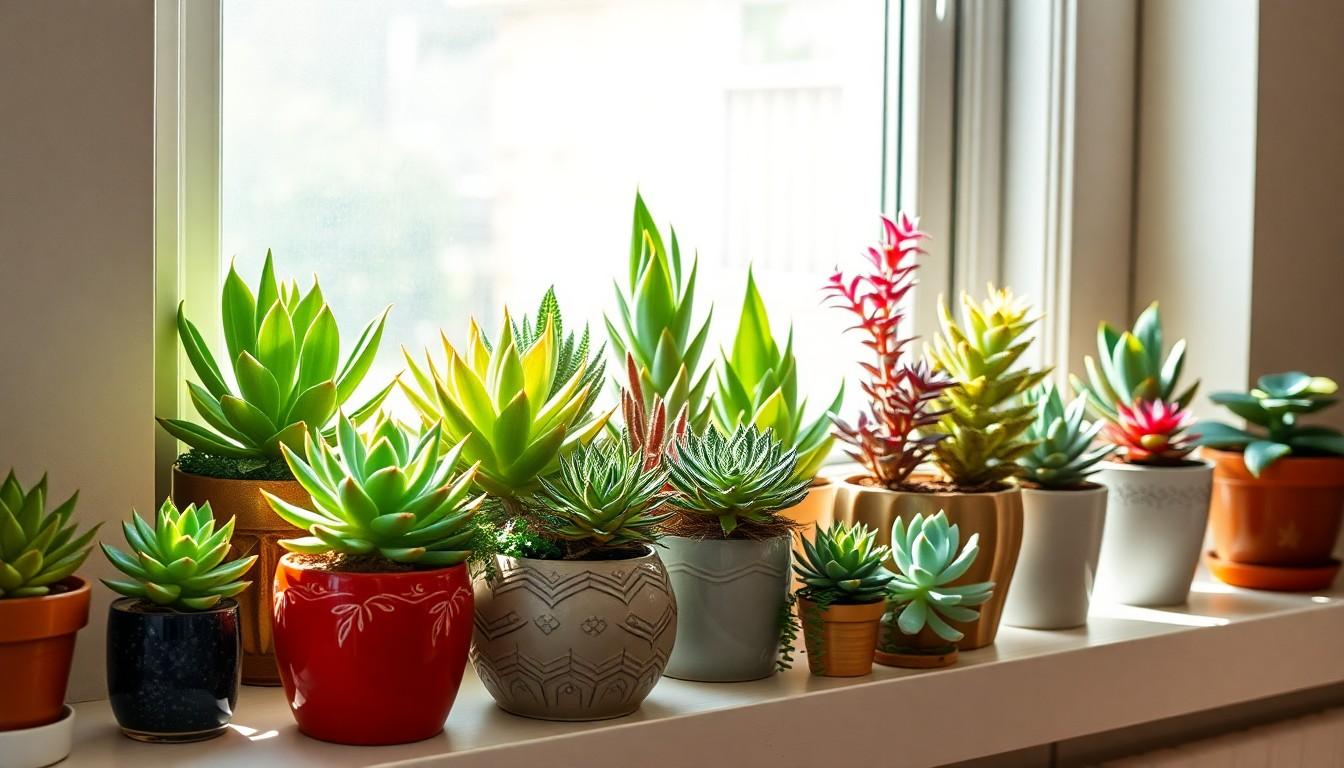Phone:
(701)814-6992
Physical address:
6296 Donnelly Plaza
Ratkeville, Bahamas.

Succulents are the quirky little green companions that bring life to any space. With their plump leaves and charming personalities, they can turn even the drabbest corner into a mini oasis. But before you dive headfirst into the world of these fabulous flora, it’s crucial to understand their unique needs. After all, no one wants to be the proud parent of a sad, shriveled cactus.
Caring for succulents isn’t rocket science, but it does require a sprinkle of knowledge and a dash of humor. From watering woes to sunlight shenanigans, these resilient plants have their own set of rules. So grab your gardening gloves and get ready to uncover the secrets to keeping your succulent squad thriving. With the right care, these little beauties will reward you with vibrant growth and endless joy.
Succulents stand out as versatile and appealing plants. Their unique adaptations make them well-suited for various environments.
Succulents are plants characterized by thick, fleshy parts that store water. These adaptations allow them to thrive in arid conditions. The most common types include cacti, agave, and aloe, each displaying diverse shapes and colors. Such strategic water storage helps them withstand long periods without moisture, making it essential to recognize their distinct needs.
Numerous types of succulents exist, each with unique features. Popular varieties include Echeveria, known for its rosette shape, and Haworthia, which often displays striking stripes. Sedum plants come in many forms, ranging from ground covers to trailing varieties. Aloe vera, famous for its medicinal properties, is another well-regarded succulent. Understanding the different types facilitates proper care and enhances the overall enjoyment of these plants.

Caring for succulents involves understanding their specific needs. Here are the essential tips to ensure their growth and health.
Succulents thrive on infrequent watering. It’s crucial to allow the soil to dry out completely between watering sessions. Check the top inch of the soil; if it’s dry, it’s time to water. Typically, succulents need water every 1 to 2 weeks, depending on the environment. When watering, do so thoroughly, allowing excess water to drain out of the pot. Overwatering can lead to root rot, a common issue for succulent plants.
Bright, indirect sunlight is ideal for most succulents. A south-facing window often provides the right amount of light. If they’re placed in too much direct sunlight, however, leaf burn can occur. Optimal temperature ranges from 60°F to 80°F, accommodating indoor settings. During winter months, protecting succulents from extreme cold is crucial to their survival. Adequate light and temperature promote vibrant growth.
Well-draining soil is essential for succulents to thrive. A mix designed for cacti or adding sand to regular potting soil improves drainage. Pots should contain drainage holes. This prevents water accumulation, promoting root health. Repotting every couple of years allows for fresh soil and room for growth. Observing root health helps determine when repotting is necessary.
Succulents face various challenges, but understanding their needs leads to effective solutions.
Overwatering represents one of the most common pitfalls in succulent care. Symptoms include yellowing leaves and mushy stems, signaling root rot. Allowing the soil to dry completely between waterings prevents excess moisture. Each plant type requires different watering schedules, usually every 1 to 2 weeks. Adjusting the watering frequency based on seasonal changes helps maintain healthy growth. Checking drainage holes in pots ensures excess water flows out, reducing the chance of overwatering.
Pests can affect succulent health, often manifesting as webbing, dots, or discolored areas on leaves. Mealybugs and aphids are frequent culprits. Entomologists recommend several methods for pest management. First, introducing beneficial insects, like ladybugs, minimizes pest populations naturally. Second, spraying a gentle insecticidal soap removes existing pests without harming the plants. Keeping succulents in clean environments discourages infestations. Regularly inspecting plants for signs of trouble aids in early detection and management.
Advanced care techniques enhance the health and growth of succulents. Employing these methods can lead to vibrant and thriving plants.
Fertilizing succulents provides essential nutrients during their growing season. Use a diluted, balanced fertilizer, such as a 10-10-10 formulation, every four to six weeks. Applying fertilizer sparingly prevents overwhelming the plant. Alternatives like a cactus-specific fertilizer promote healthy growth as well. Most succulents thrive without additional feeding during the dormant winter months. Keeping the fertilizer solution light maximizes absorption and minimizes potential root burn.
Propagation methods facilitate the expansion of succulent collections. Stem cuttings remain a popular choice. Cut healthy stems from established plants and allow them to callous for a few days. Placing the cuttings in well-draining soil encourages root growth. Leaf propagation provides an alternative approach; detach healthy leaves, let them dry for a day, then place them on soil. Watering the soil lightly promotes new plantlets. Both methods require patience, but they can lead to successful growth and new additions to any succulent garden.
Caring for succulents can be a rewarding experience that adds beauty to any home or garden. With the right knowledge and a little patience, these resilient plants can thrive and flourish. By understanding their specific needs for light, water, and soil, anyone can create a nurturing environment that promotes healthy growth.
Regular monitoring for pests and maintaining proper watering schedules are key to keeping succulents in top shape. Embracing the journey of succulent care not only enhances the aesthetic appeal of a space but also brings a sense of accomplishment. With each new leaf and bloom, the joy of nurturing these unique plants becomes a delightful part of everyday life.